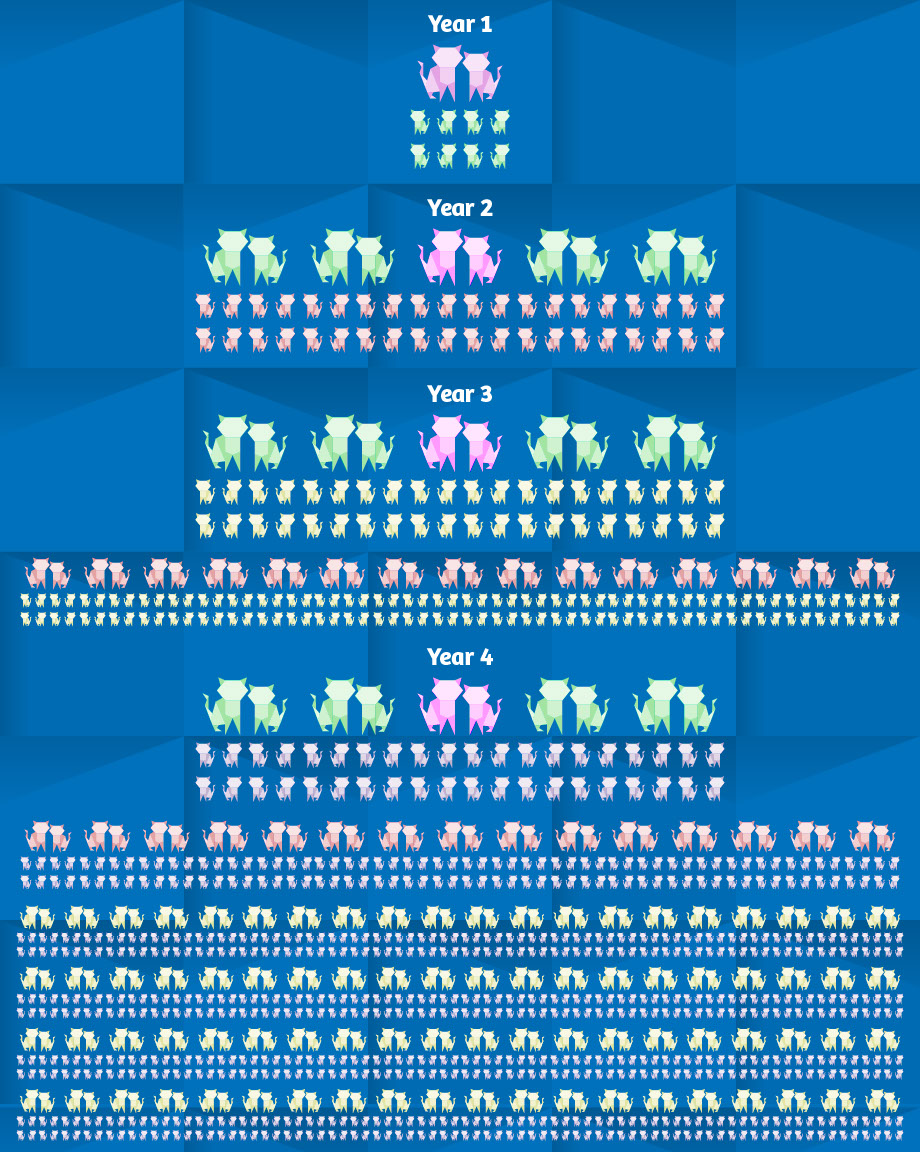Spaying or Neutering is Important
There’s an excess of unwanted puppies/kittens and dogs/cats in shelters across the nation. Companion animal overpopulation is not a problem that can resolve itself.
You cannot adopt your way out!
Long-term spaying and neutering of the population is key!
For every person that is born, 15 dogs and 45 cats are also born. Millions of unwanted puppies and kittens born every year will never find good homes. Every hour nearly 2,500 cats and dogs are born across the United States and our pet population is 100 million.
This problem is too big to be solved by adoption alone.
Please, spay or neuter your pet.

